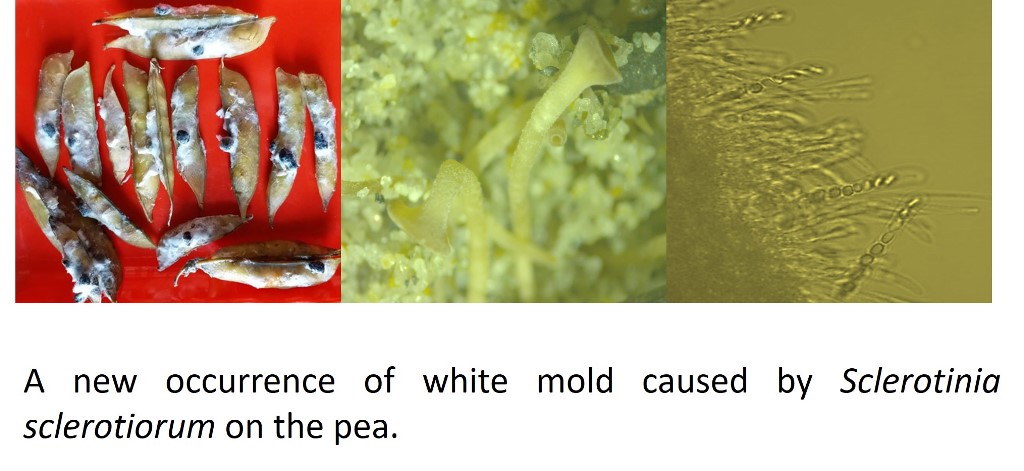A new disease causing the tan to light brown blighted stems and pods has occurred in 2.6% pea (Pisum sativum L.) plants with an average disease severity rating of 3.7 in Chapainawabganj district, Bangladesh. A fungus with white appressed mycelia and large sclerotia was consistently isolated from symptomatic tissues. The fungus formed funnel-shaped apothecia with sac-like ascus and endogenously formed ascospores. Healthy pea plants inoculated with the fungus produced typical white mold symptoms. The internal transcribed spacer sequences of the fungus were 100% similar to that recovered from an epitype of Sclerotinia sclerotiorum, considering the fungus to be the causative agent of white mold. Mycelial growth and sclerotial development of S. sclerotiorum were favored at 20°C and pH 5.0. Glucose was the best carbon sources to support hyphal growth and sclerotia formation. Bavistin and Amistar Top inhibited the radial growth of the fungus completely at the lowest concentration. In planta, foliar application of Amistar Top showed the considerable potential to control the disease at 1.0% concentration until 7 days after spraying, while Bavistin prevented infection significantly until 15 days after spraying. A large majority (70.93%) of genotypes including tested released pea cultivars were susceptible, while six genotypes (6.98%) appeared resistant to the disease. These results could be important for management strategies aiming to control the incidence of S. Sclerotinia and eliminate yield loss in pea.

